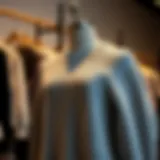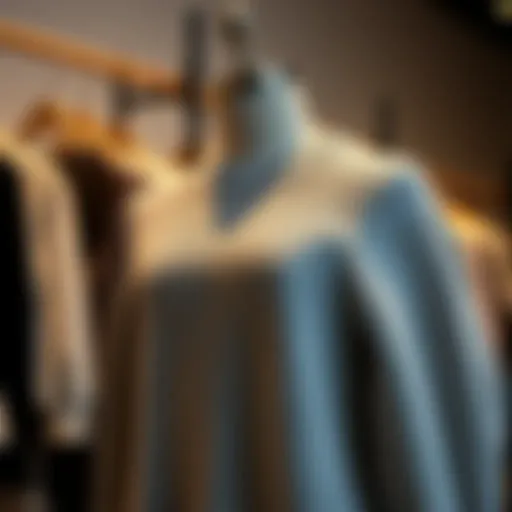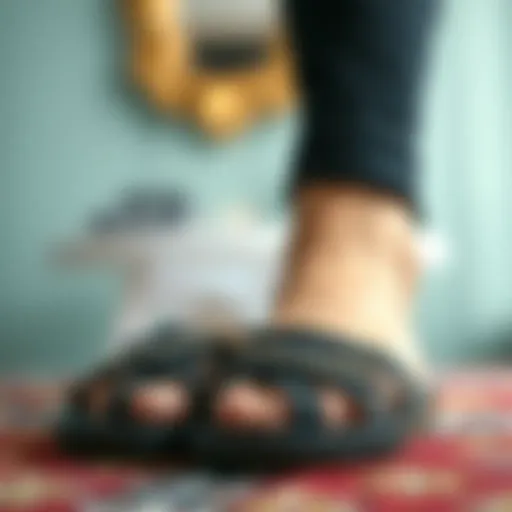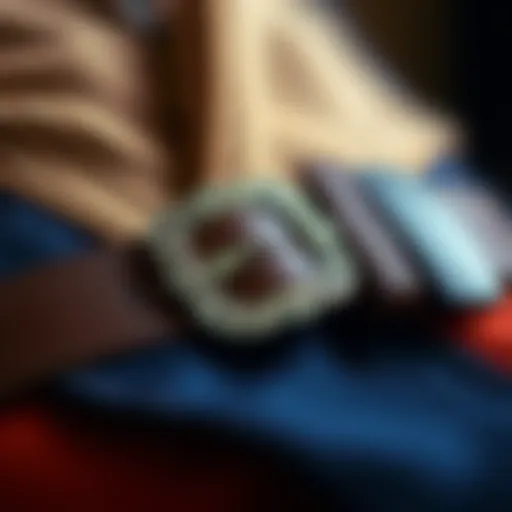The White Short Petticoat: History and Fashion Insights
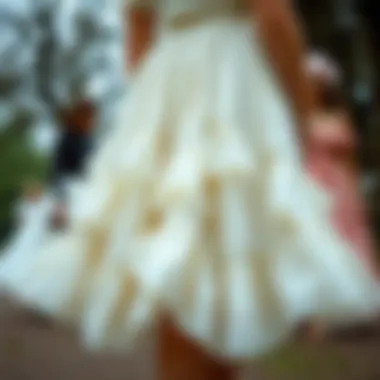

Intro
In the vast landscape of fashion, garments often come and go, but some pieces remain constants, holding significance across generations. One such timeless piece is the white short petticoat. This article seeks to explore its historical foundations, cultural relevance, and modern-day applications. The white short petticoat is not just a fabric swatch; it’s a reflection of societal shifts, personal expression, and creative styling that resonates with fashion enthusiasts, designers, and students alike.
In the following sections, we will peel back the layers of the petticoat, examining its journey through varying eras and trends, while uncovering insights into its construction, styling possibilities, and sustainable practices that have become increasingly crucial in today's fashion narrative.
Fashion Trends
The world of fashion is a dynamic one, where influences are drawn from various sources, and trends are continuously evolving. The white short petticoat has seen its share of transformations and revivals, making it a vital component of eclectic wardrobes.
Latest Seasonal Trends
Each season brings about fresh takes on this classic garment. Currently, designers are emphasizing airy, lightweight fabrics that swirl in the breeze, reflecting a growing preference for comfort without sacrificing style. A-line cuts and ruffles have emerged as favored designs, which provide a playful yet sophisticated twist on traditional silhouettes. This year, you might notice an increasing presence of sheer materials complemented with delicate embroidery, allowing for layering in warmer months while also serving as a fashion statement.
Iconic Styles Revived
From the 1950s’ full-circle skirts to the medieval undertones of longer styles, the white short petticoat has undergone multiple incarnations. Today, styles such as the high-low petticoat have resurfaced, bridging classic and modern elements effortlessly. The film industry often draws from these traditions, as seen in period pieces that depict women adorned in beautifully structured petticoats, reminding us of their importance in costume design.
"The resurgence of the white short petticoat is not just about nostalgia; it embodies a blend of heritage and modern sophistication."
Style Tips
To truly harness the potential of a white short petticoat, understanding how to style it is essential. Here are some useful insights:
How to Mix and Match
- Pairing with Tops: From chic blouses to casual graphic tees, the versatility of the petticoat allows for diverse combinations. A fitted turtleneck can enhance the silhouette during colder months, while a loose-fitting tank top can provide a breezy feel in summer.
- Color Coordination: While white naturally pairs well with almost anything, consider adding splashes of color and texture through accessories. A vibrant belt or an oversized scarf can dramatically change the outfit’s mood.
- Footwear Recommendations: The footwear choice can dictate the overall vibe. Opt for strappy sandals in the summer or ankle boots during the autumn months to maintain balance within your look.
Dressing for Different Occasions
- Casual Outings: Team your petticoat with sneakers and a casual tee for a relaxed yet stylish look that’s perfect for brunch with friends or day excursions.
- Formal Events: For more formal gatherings, elevate your petticoat with a fitted blazer and heels. Incorporate statement jewelry to add glamour.
- Seasonal Celebrations: For holiday events, consider adding festive embellishments like sequins or lace to the petticoat, creating an eye-catching ensemble that stands out.
Whether you're navigating a fashion class or simply enhancing your wardrobe, understanding the nuances of the white short petticoat offers invaluable insights. As the lines of tradition and modernity continue to meld, this garment stands as a representation of personal expression and cultural dialogues within fashion.
With the exploration of its styles, trends and significant attributes, the white short petticoat remains a cherished staple, signifying more than just a piece of clothing, but rather a canvas of creativity and identity.
Historical Context of the Petticoat
Understanding the historical context of the petticoat is not just a matter of tracing timelines or cataloging styles; it’s about uncovering the social, cultural, and practical layers that have shaped this garment over time. The white short petticoat, in particular, serves as a powerful symbol embedded in a rich tapestry of meaning and significance. It reflects the evolution of fashion trends, shifting societal norms, and the constantly changing roles of women.
Origin of the Petticoat
The term 'petticoat' originates from the French word petit - which means 'small' - and coite, meaning 'coat.' Initially, it referred to a type of underskirt worn by women for added warmth and modesty. The idea was simple: it provided an extra layer, which offered both insulation and a hint of elegance beneath the main dress. In its early forms, petticoats were made from heavy materials such as wool or linen, serving practical purposes as much as decorative ones.
During the 16th century, the petticoat began to take on a more prominent role in women’s apparel, influencing the shape and silhouette of outer garments. This time coincided with the rise of the hoop skirts in Europe, allowing women to achieve a broader, more bell-like figure. Here, we see the petticoat transform from mere warmth provider to an essential part of the overall wardrobe, defining femininity in various cultural contexts.
Evolution Through the Ages
As the centuries rolled on, the petticoat not only changed in style but also in meaning and significance. In the 18th century, we witness the rise of the Victorian era, where the white petticoat became synonymous with purity and modesty. This marked a shift toward more structured designs; petticoats were often crinoline or other stiff materials to create volume. However, this was also a time when fashion was not just about aesthetics; it represented social norms, class distinction, and women's roles in society.
The early 20th century saw the petticoat further evolve through the impact of various movements, including women's suffrage. As women sought more freedom, the petticoat began to simplify in design, becoming shorter and made from lighter fabrics like cotton. This change reflected a growing independence and adjustment to the pace of modern life.
The White Short Petticoat Defined
The white short petticoat holds a distinct place in the realm of fashion, serving not just as an undergarment but as a staple in many wardrobes. It reveals a unique blend of style and versatility that resonates through diverse fashion conversations. In this section, we will dig into the different materials and cuts that define this garment, shedding light on their significance and implications in contemporary styling.
Materials Used in Construction
Cotton


Cotton has long been favored in clothing for its comfort and breathability. When it comes to petticoats, this material is a crowd-pleaser. It allows ample air circulation and feels soft against the skin, which is crucial for a garment worn underneath dresses, especially during warmer months. Its durability is another prime characteristic—cotton can withstand rigorous washing and maintain its shape over time.
One particularly attractive feature of cotton in petticoat construction is its ease of care. Parents often reach for cotton when crafting or buying petticoats for children due to its stain resistance and simple washing requirements. However, while cotton’s natural fibers are great for comfort, they can sometimes lack the elegance that other materials provide, leading some fashion enthusiasts to opt for more luxurious alternatives.
Silk
On the other end of the spectrum lies silk, which ushers in an air of sophistication and grace that cotton simply can't match. When silk is the choice fabric for a short petticoat, it lends a soft shimmer that enhances the overall aesthetic of the outfit. It's lightweight and drapes beautifully, creating a flattering silhouette that is hard to ignore.
However, silk does have its quirks. Though it possesses a certain richness, it also demands more delicate care practices. Notably, it's susceptible to stains and may require dry cleaning, which isn't always the most convenient choice. Its luxury comes with a price, but for those wanting to make a statement, a silk petticoat might just be worth the added hassle.
Synthetic Fibers
Another significant player in petticoat construction is synthetic fibers, which have surged in popularity over recent years. Materials like polyester or nylon are often cited for their affordability and durability. They’re easy to care for and can be produced in a variety of styles and cuts, appealing to a broader market.
Synthetic fabrics are often engineered to be lightweight, breathable, and even moisture-wicking, adding another layer of comfort for the wearer. However, it's worth noting that while they might be easy on the wallet, they often lack the luxurious feel of natural fabrics like cotton and silk. Furthermore, they can contribute to environmental concerns, given that they are derived from petrochemicals and pose challenges when it comes to biodegradability.
Design and Cut
The cut and design of a petticoat heavily influence its overall look and functionality. Different designs can completely shift the vibe of an outfit, adding layers of complexity or simple elegance to the ensemble.
A-Line
The A-Line cut is a classic that flares at the hem, resembling the shape of the letter 'A'. This design is especially loved because it provides a flattering fit on various body types, making it a popular choice for anyone wanting to feel comfortable while still looking chic. It gives volume without overwhelming the silhouette.
This cut can effortlessly transition from youthful styles to more sophisticated evening ensembles. However, for those desiring a tighter fit around the waist and hips, this style might not always provide the desired cinch.
Tiered
Tiered designs feature layers of fabric, each tier adding fullness and movement to the petticoat. This style can be especially appealing in playful, feminine fashion—think flirty skirts that swing and sway with every step. The multiple layers can create depth and texture that make a simple outfit pop.
Nevertheless, tiered petticoats often require more fabric, which can lead to a heftier price tag. The bulkiness might not suit everyone's style or comfort preference, making it a bit of a niche choice.
Straight Cut
For those who prefer a more streamlined look, the straight cut offers a minimalist approach that works well in various settings. This style clings closer to the body, providing a sleeker aesthetic that can elevate the sophistication of the entire outfit.
It is particularly effective in creating clean lines which are ideal for both professional and casual attire. However, the lack of volume can sometimes mean that it won’t pair as well with certain dresses that benefit from the added fluff of an A-Line or tiered petticoat.
Thus, each material and design choice presents distinct advantages and drawbacks, shaping the way the white short petticoat fits into the modern wardrobe.
Styling the White Short Petticoat
The art of styling a white short petticoat lies in understanding its versatility and charm. This garment is not merely an underlayer or an afterthought; it serves as a foundational piece that enhances various outfits in surprising ways. By exploring the ways to style this garment, readers can unlock creative potential they may not have considered before, ensuring that the white short petticoat remains a reigning favorite in modern wardrobes.
Layering Techniques
Beneath Dresses
Layering a white short petticoat beneath dresses takes skill and thoughtful consideration, yet the outcome is often stunning. This technique offers ample benefits—it adds volume and movement to an otherwise plain silhouette, creating a delightful flounce that captures attention. The crisp, white fabric contrasts beautifully with bold colors or delicate patterns of dresses, enhancing the overall aesthetic. When selected thoughtfully, this layer can provide added comfort, especially with flowing summer dresses.
However, it's important to take the specific dress style into account. For example, A-line or fit-and-flare dresses often pair well with petticoats, as they accentuate curves and create a balanced silhouette. On the flip side, slim fit dresses could lead to a bulging effect if the petticoat is too voluminous.
As a Standalone Piece
Wearing a white short petticoat as a standalone piece is an exciting venture. This choice showcases the garment's beauty all on its own, often turning heads and making a statement. The poofy design can translate into a playful daytime look or, depending on how it's styled, an edgy evening ensemble. Its lightweight nature makes it a suitable choice for warm weather, allowing breathability while still holding its shape.
Essentially, this styling choice lets creativity run wild, permitting bold color choices in accessories or top pieces. However, one must tread carefully with this route; if styled incorrectly, wearing a petticoat alone can slip into costume territory rather easily. Keeping accessories minimalistic can help avert this risk.
Seasonal Adaptations
Spring and Summer Styles
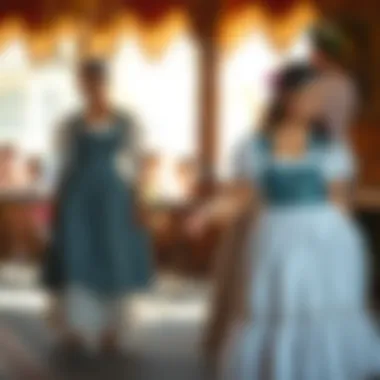

Spring and summer are moments when the white short petticoat shines. During these seasons, it often transitions effortlessly into a variety of outfits that celebrate warmth and functionality. Incorporating lightweight fabrics such as cotton or linen can enhance comfort and elegance under the sun.
For instance, pairing a short petticoat with a floral sundress creates a whimsical combination that captures the essence of warmer weather. The white tone of the petticoat complements vibrant floral prints, allowing for a balance that feels fresh and airy. The light layers also provide the necessary movement for picnics and outdoor outings.
Transitioning to Fall
As the leaves turn and the air gets a bit crisper, adapting a white short petticoat for fall can be both fun and functional. Layering becomes the name of the game—think of incorporating rich textures like knits or heavier fabrics in tops and outerwear. A petticoat can add flair beneath a midi-length skirt for a chic, layered look, or it can be offset with a more substantial trench coat to offer warmth and style.
Dark colors become more prevalent in fall fashion, so pairing a white petticoat with darker, moody hues can create an interesting juxtaposition as you straddle the line between soft and bold. Additionally, ankle boots or chunky shoes can ground a look that includes a petticoat, avoiding overly rigid or delicate vibes.
By recognizing the styling prowess embedded in a white short petticoat and adapting it to various layers and seasons, wearers can cleverly navigate through trends while maintaining individuality.
"Fashion is about dreaming and making other people dream. The white short petticoat, through its adaptability in style, allows for storytelling to unfold within any wardrobe."
Thus, the journey of styling a white short petticoat is both art and science, merging personal taste with fashion trends, creating an enduring appeal as both a layering piece and a statement garment.
Cultural Significance of the Petticoat
The white short petticoat transcends its functional role as merely an undergarment or a fashion accessory; it’s steeped in cultural narratives and societal implications that have evolved over centuries. Understanding this significance goes beyond appreciating its aesthetic appeal; it involves grasping how this piece of clothing can reflect and challenge societal norms. This section dives deep into the rich tapestry that weaves together the white short petticoat's place in various cultures and its transformative influence on women's fashion.
Symbolism in Different Cultures
Throughout history, clothing often reflects cultural identities and beliefs, and the white short petticoat is no exception. It has served as a symbol of purity, femininity, and social status across diverse cultures.
- Purity and Innocence: In Western cultures, the color white is traditionally associated with purity and innocence. During the 19th and early 20th centuries, the white petticoat became a staple in a woman’s wardrobe, symbolizing her virtue. Weddings often feature white dresses with petticoats as integral components, reinforcing the idea of a bride’s chastity.
- Feminine Identity: Across many societies, the petticoat symbolizes feminine identity. In cultures like the Italian Renaissance, voluminous skirts created by petticoats were not just fashionable; they were a statement of power and femininity. The larger the petticoat, the more status a woman reflected in society, making it a tool of expression rather than mere clothing.
- Cultural Variants: In certain cultures, variations of the petticoat carry significant meaning. For instance, in traditional Indian attire, garments similar to petticoats, such as the "lehenga choli," serve a similar purpose, creating a layered look that is as much about cultural heritage as it is about aesthetics.
In many cultures, color and layering in garments serve as embodiments of ideals and societal roles that persist even as styles evolve.
Impact on Feminine Fashion
The petticoat has played an outsized role in shaping feminine fashion across the globe. Beyond its role as a mere underlayer, it has influenced trends and styles in several noteworthy ways.
- Defining Silhouettes: The white petticoat has been pivotal in defining feminine silhouettes. Its addition under dresses can alter the drape and fullness of a garment, leading to various styles that range from the bell-shaped skirts of the Victorian era to the more streamlined cuts of the mid-20th century.
- Expression Through Fashion: As fashion reflects social movements, the petticoat has been a canvas for expression. During the feminist movements of the 1960s and 1970s, women often used their clothing as a form of protest, rethinking the petticoat’s traditional connotations of submission. Modern iterations of the petticoat embrace empowerment, with well-designed garments celebrating body confidence and individuality.
- Contemporary Revivals: In today’s world, the white short petticoat is experiencing a resurgence as designers reinterpret its classic appeal. Street-style influencers and fashion-forward thinkers incorporate this item into various outfits, illustrating that it is not bound by time but is a continuously evolving sartorial statement.
In summary, the cultural significance of the white short petticoat is manifold. It symbolizes purity and femininity, defines an array of silhouettes, and reflects evolving identities within fashion. As society continues to embrace inclusivity and diverse representations, the role of the petticoat in contemporary fashion showcases the garment’s enduring legacy.
Learn more about the symbolism of clothing in different cultures at Britannica.
Explore the evolution of feminine fashion on Wikipedia.
Sustainability in Petticoat Production
Sustainability has become a cornerstone of modern fashion, urging designers and consumers alike to reflect on the origin and impact of their clothing choices. In the context of the white short petticoat, this topic is profoundly relevant. As the industry grapples with its environmental footprint, petticoats—often overlooked in discussions about eco-friendly fashion—are also under scrutiny. Understanding sustainably-produced petticoats allows for a deeper appreciation of not only this garment but also its role in guiding consumers toward responsible fashion choices.
Sustainable practices in petticoat production focus on minimizing environmental impact while enhancing the social and ethical standards within the apparel industry. By paying attention to how such garments are made, we can foster a fashion culture that respects both the planet and the people involved in the production process. As consumers grow more conscientious, brands that embrace sustainability find themselves at an advantage, appealing to a loyal customer base that values ecological integrity.
Eco-Friendly Materials
The choice of materials has a significant effect on a garment's ecological footprint. In the realm of white short petticoats, opting for eco-friendly materials such as organic cotton or sustainably sourced linen is pivotal. These fabrics not only reduce the reliance on harmful pesticides and fertilizers but also promote sustainable farming practices that benefit both the environment and the workers.
- Organic Cotton: Grown without synthetic chemicals, organic cotton is softer and more breathable. This material uses up to 90% less water than conventional cotton production, making it an excellent choice for a sustainable petticoat.
- Tencel: This fiber, derived from eucalyptus trees, is produced in a process that recycles water and solvents. Tencel is biodegradable and requires less energy during production.
- Recycled Polyester: Utilizing plastic waste, recycled polyester meshes durability with sustainability, preventing plastic from cluttering landfills.
Through the use of these eco-conscious materials, such petticoats not only serve a purposeful function but also align the wearer with an environmentally responsible identity.
Ethical Manufacturing Practices
Beyond material selection, the way garments are manufactured plays a critical role in sustainability. Ethical manufacturing practices encompass fair labor conditions, transparently sourced materials, and environmentally friendly production processes. Brands committed to ethical practices often engage in the following:
- Fair Wages and Working Conditions: Ensuring that workers receive a living wage and work in safe conditions is a fundamental part of ethical manufacturing. By supporting brands that prioritize fair labor, consumers endorse the well-being of the people behind their clothing.
- Local Production: Brands that manufacture locally reduce their carbon footprint by minimizing transportation emissions. They also support local economies, contributing to job creation and community sustainability.
- Waste Reduction Initiatives: Some companies adopt zero-waste strategies, minimizing the leftover fabric and other materials that typically go to landfills during garment production.
Adopting such practices is essential in the quest for a truly sustainable wardrobe. By choosing ethically manufactured white short petticoats, consumers support a shift toward a more responsible and equitable fashion industry.
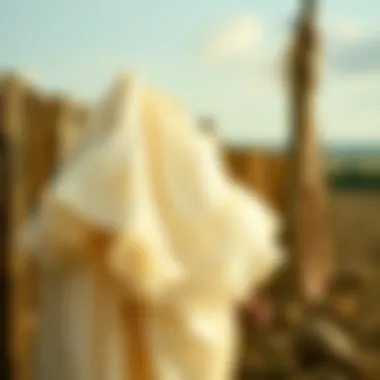

Embracing sustainability in petticoat production is not just a trend; it's an enduring movement toward better choices that honor the earth and its people.
Current Trends in Petticoat Usage
In the shifting sands of fashion, the white short petticoat stands resilient, finding its place in modern style through various trends. This section delves into how societal shifts and technological advancements—particularly the surge of social media—have breathed new life into its usage.
Influence of Social Media
The role of social media in driving current fashion trends cannot be overstated. Platforms like Instagram and TikTok have become the new runways, shaping what’s in vogue. Influencers and fashionistas often showcase the versatility of the white short petticoat, pairing it with various outfits. From casual wear to chic evening dresses, the petticoat appears in unexpected contexts, adding a unique twist to traditional styling.
With hashtags like #PetticoatStyle and #PetticoatFashion, it’s easy to see how these garments have become a topic of conversation.
- Social media helps in showcasing:
- Layering techniques,
- Various fabrics and styles,
- Innovations in tailoring—bringing attention to sustainable practices.
By engaging in this visual dialogue, users are not just consumers but also contributors to a community that values creativity and personal expression. This phenomenon demonstrates how the past informs the present, as vintage styles become relevant again, reshaped by contemporary influences.
Celebrity Fashion Choices
Celebrities have an uncanny ability to shape fashion trends, and the white short petticoat is no exception. Stars like Dua Lipa and Taylor Swift have been spotted adopting this item, often mixing it with bold, statement pieces to create unique looks. Their choices extend beyond just wearing the garment; they influence their fans and followers to consider how they might incorporate such items in their own wardrobes.
Various events, from red carpet appearances to everyday outings, showcase the versatility of the petticoat. Some key points include:
- Dressing Up: Opting for a petticoat under a flowing dress to add volume and drama.
- Dressing Down: Pairing it with a simple t-shirt for a laid-back, yet stylish look.
- Accessorizing: Enhancing the outfit with accessories that spotlight the petticoat.
"Fashion isn’t just about what you wear; it’s also about how you wear it. The white short petticoat exemplifies this beautifully."
The interaction between celebrity choices and social media trends creates a vibrant dialogue within the fashion realm. As styles evolve, so too does the white short petticoat find its way into the hearts and closets of many, continually proving its worth.
The trends discussed in this section highlight not only the garment's sustained relevance but also its ability to adapt and inspire. As we look ahead, the petticoat remains a staple that blends tradition with modern-day fashion innovation.
Care and Maintenance of White Short Petticoats
Taking care of white short petticoats extends their lifespan and maintains their aesthetic appeal. These garments, often delicate due to their fabrics and constructions, require mindful handling to keep them looking fresh and new. Proper care can not only maintain their structural integrity but also enhance the overall experience of wearing them. Here, we break down essential care practices into washing guidelines and storage tips, ensuring your petticoat stays in prime condition for years to come.
Washing Guidelines
When it comes to washing, the golden rule is to follow the care label instructions that come with the garment. However, here are some practical tips for handling the laundry of your white short petticoats:
- Choose Gentle Cycles: Use a gentle cycle on your washing machine. The delicate nature of most fabrics used in petticoats—like cotton and silk—demands a soft touch.
- Cold Water is Key: Opt for cold water during washing. Hot water can cause shrinking or fading of the fabric, especially for white garments.
- Use Mild Detergents: Select a mild detergent free from harsh chemicals. This lessens the risk of color bleaching and keeps the fabric in good shape.
- Drying Methods: Instead of tossing them in the dryer, air drying is often the safest approach. Hang them in a shaded area to dry—direct sun can lead to yellowing of white fabrics.
- Spot Clean When Needed: For minor stains, quick spot cleaning can be more effective than full washes. Use a gentle stain remover dabbed onto the affected area before rinsing it with cold water.
Storage Tips
The way you store your white short petticoat can greatly influence its longevity. Follow these guidelines to ensure it remains as beautiful as the day you bought it:
- Use Breathable Garment Bags: When storing your petticoat, use a breathable garment bag to protect it from dust and potential discoloration. Avoid plastic bags as they can trap moisture, leading to mildew and odor over time.
- Avoid Overcrowding: Store your petticoat in a manner that allows it to hang freely or folded neatly without being crushed or wrinkled. Overcrowding can create creases that are hard to remove later.
- Keep Away From Direct Light: Store the garment in a dimly lit space to prevent fading caused by exposure to sunlight.
- Regular Checks: Every once in a while, take the petticoat out to check for any signs of damage or mildew. This proactive approach allows you to address any issues before they worsen.
"Proper care is not just about maintaining appearance; it’s about preserving memories tied to every petticoat."
By following these care and maintenance tips attentively, one can enjoy the many joyful moments a white short petticoat can provide, from festive occasions to everyday wear, while keeping its pristine quality intact. This garment, when treated well, becomes not just a piece of clothing but a cherished item in one’s wardrobe.
End: The Enduring Appeal of the White Short Petticoat
The white short petticoat, far from being just a nostalgic piece of clothing, holds a special place in both historical and modern wardrobes. It’s a garment that transcends trends, constantly reborn and reinterpreted through various fashion cycles. By examining its multitude of attributes, we see how it remains a relevant choice for many.
A Timeless Wardrobe Staple
At its core, the white short petticoat serves as a timeless staple in fashion for several reasons. First, its versatility allows it to be styled in myriad ways – whether layered beneath dresses for that added flair or worn alone, it adapts to various occasions effortlessly. In terms of aesthetics, its neutral color complements nearly every palette, making it a dependable component of both casual and formal attire.
The adaptability of materials, such as cotton and silk, also plays a role. For those warm summer days, a lightweight cotton petticoat can keep one cool, while a silk version may add elegance for evening wear. Additionally, because it offers various cuts like A-line or tiered, it can cater to different body types, ensuring comfort is just as prioritized as style.
Looking Ahead: Future of Petticoats
Looking ahead, the future of petticoats, particularly the white short variety, lies in their potential for innovation. With the growing emphasis on sustainability, we may witness a rise in eco-friendly fabrics used in petticoat production. Designers are likely to experiment not only with materials but also with design, exploring contemporary silhouettes that cater to modern tastes and preferences.
Moreover, the influence of social media and celebrity fashion choices will perhaps continue to spotlight the petticoat, encouraging new generations to embrace it. TikTok and Instagram are teeming with fashion influencers reimagining classic styles, often showcasing unique ways to wear this age-old garment.




